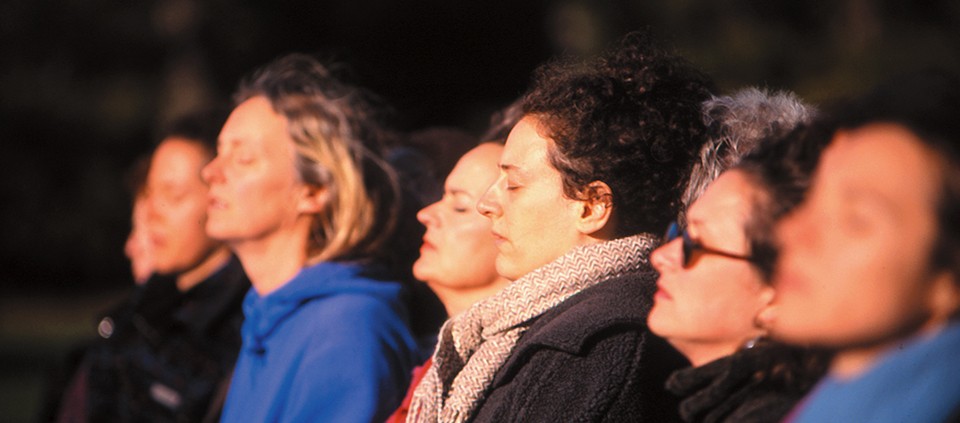Breathe Your Way to Health and Wholeness

In my introductory yoga class back in 1983, the first thing my Kripalu-trained teacher taught me was how to take a long, slow, smooth breath. Initially I resisted. “I may not know yoga postures,” I thought impatiently, “but I certainly know how to breathe!” Accustomed to taking shallow breaths, I was amazed by how much air I took in when I followed her instructions. She then showed me how to blend a flowing breath with simple stretches. I found this pairing of movement and breath to be seamless, graceful, and surprisingly energizing. At the end of the session, tears rolled down my cheeks. Relaxation and wholeness weren’t beyond my capacity after all but as near to me as breathing.
The breath is so intimately connected with well-being that it is impossible to tease the two apart. Biology tells us that cellular respiration, the process of taking in oxygen and expelling carbon dioxide from every cell, is linked to the body’s ability to absorb nutrients, eliminate wastes, and oxidize fuel into energy. When you improve breathing, the health of each and every cell is enhanced.
Breathing is also closely linked to the mind and emotions. Think of the last time you were angry, fearful, or anxious. Chances are your breath was rapid, shallow, and irregular. Contrast that with the smooth and free breath that accompanies moments of calm and peace. Such breathing sends a powerful message to the body that "all is well," stimulating the relaxation response, which lowers blood pressure, decreases heart rate, improves immune response, and produces the alpha brain waves associated with ease and creativity.
Although breathing exercises or pranayama have been integral components of yoga for thousands of years, scientists are only just beginning to study the links between breath and health. Nonetheless, they have already made several interesting discoveries.
- According to one study, practicing a slow breathing exercise daily for three months increased the activity of the parasympathetic branch of the autonomic nervous system, which is responsible for many tasks associated with health maintenance and healing. (Indian Journal of Medical Research, 2004)
- Another study assessed the physiological effects of breathing exclusively through the right nostril, a traditional form of pranayama. It was found that right-nostril breathing for 45 minutes a day increased oxygen consumption and blood pressure and had a stimulating effect on body and mind. This effect has been used by some people to alleviate symptoms of depression. (Journal of Alternative and Complementary Medicine, 1996) For more information about this study, see Amy Weintraub’s book, Yoga for Depression: A Compassionate Guide to Relieve Suffering Through Yoga.
- In a promising study conducted by the Northern Colorado Allergy Asthma Clinic, asthmatics who learned yogic breathing and relaxation techniques reported greater relaxation, positive mental attitude, better exercise tolerance, and decreased usage of beta-adrenergic inhalers.
- A 2002 Indian study showed that yogic breathing exercises significantly decreased the level of free radicals in the body, which have been linked to disease-causing processes.
Even a few minutes of natural breathing can ease tension, elevate your mood, and sharpen your mind. It is easy to experience this for yourself right now. Sit up tall and let your gaze grow soft. Relax your belly and allow the breath to flow freely and naturally. Consciously smooth out your breath, shifting easily between inhalations and exhalations, gradually finding your own rhythm. Breathing in this way, you are likely to find that your breath naturally deepens. Let this happen as you release any tensions that inhibit an easy flow of breath. Continue for three minutes and pay close attention to how your body feels after this simple act of focused breathing.
© Kripalu Center for Yoga & Health. All rights reserved. To request permission to reprint, please e-mail editor@kripalu.org.
Danna Faulds, author of seven poetry books and the memoir Into the Heart of Yoga: One Woman's Journey, is a long-term Kripalu Yoga practitioner.
Full Bio and Programs